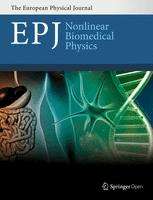Cancer risk myth debunked mathematically

A recent study published in Science by Tomasetti and Vogelstein suggests that variations in terms of cancer risk among tissues from various organs in the body merely amount to pure bad luck. In other words, cancer risk is linked to random mutations arising in the normal course of DNA replication of healthy cells. They also claim that environmental and genetic factors play a lesser role. The scientific community has primarily reacted negatively to this interpretation and promptly refuted it with qualitative arguments and empirical evidence.
Joining these voices are Didier Sornette and Maroussia Favre from ETH Zurich, Switzerland, who uncovered the statistical fallacy at the source of the Science paper's conclusion. The key is to distinguish between individual organ risks and population risks, they wrote in recent correspondence published in EPJ Nonlinear Biomedical Physics. They also contend that the role of genetic and environmental factors must not be underplayed, even if these factors cannot explain differences in cancer rates between different organs.
Sornette and Favre's argument points to the importance of population heterogeneity, i.e. each person has different individual risks that are perhaps linked to environmental and genetic factors, when establishing population-wide predictions of cancer risk.
To prove their point, the authors include a rigorous mathematical demonstration. For any given organ, they calculate a correlation between lifetime cancer risk and the total number of stem cell divisions. They do so for two different sub-population groups, one with a high cancer risk and the other with a low risk, averaged over the whole sample population. This translates into an equal or higher correlation of cancer occurrence for the whole population.
This counters the Science paper's interpretation that a large fraction of the variation in cancer risk among different organs can largely be explained by the number of stem cell divisions. In fact, the authors contend, the measurable difference between organs in terms of cancer rates are not mutually exclusive to the strong environmental and genetic effects on cancer rates.
More information: D. Sornette et al. Debunking mathematically the logical fallacy that cancer risk is just "bad luck", EPJ Nonlinear Biomedical Physics (2015). DOI: 10.1140/epjnbp/s40366-015-0026-0
Tomasetti C, Vogelstein B. Variation in cancer risk among tissues can be explained by the number of stem cell divisions. Science. 2015;347(6217):78–81.
Journal information: Science
Provided by Springer


















